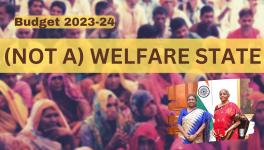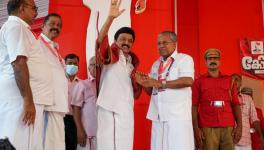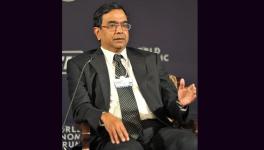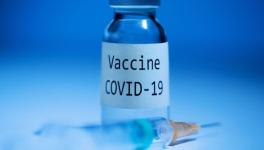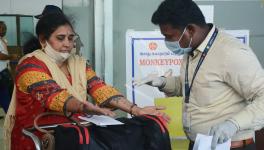Budget 2023-24: Even Post-Covid, India Needed Health Budget Hike
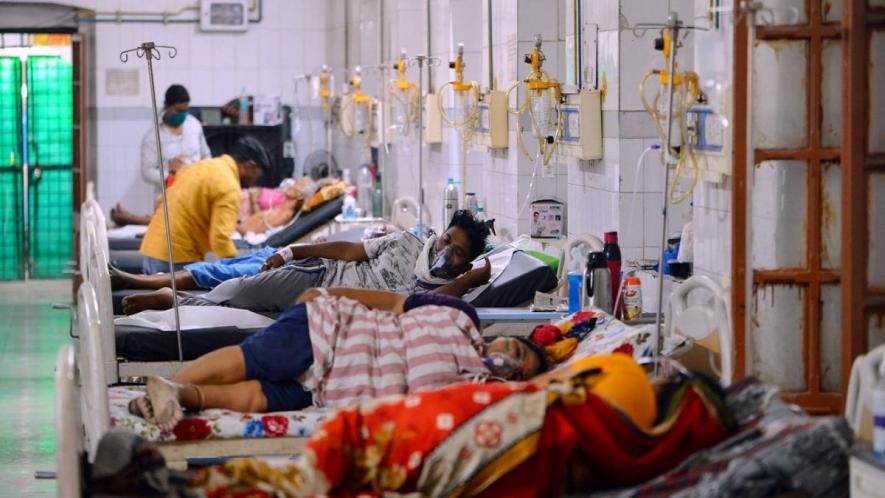
Representational Image. Image Courtesy: PTI
Budget 2023-24 can be seen as the first Union budget since the recovery from the pandemic, in which the health sector did not receive much focus, unlike the previous two years. We can note a marginal reduction in the share of health in the aggregate Union budget, which was 3.6% in 2021-22, fell to 2.7% in 2022-23 and stands at 2.4% in 2023-24. The fact that draws even more attention is the 15% decline in the revised estimate of the Union health budget for 2022-23 compared with the budgeted amount for that year.
In India, the total Union health budget is allocated through the ministries of AYUSH, health and family welfare and finance. Considering the allocation through all three ministries, Rs 1,06,654 crores has been allocated to health for 2023-24. This is a slight decrease from last year’s budgeted allocation of roughly Rs 1,07,433 crores. But it is important to note that despite this budgeted allocation in 2022-23, the revised estimate for health sector was slashed to Rs 91,90,000 crores for the financial year 2022-23 (Table 1).
Table 1: Allocation for Health care in Indian Federal Budget (Figures are in Rs. Thousand Crore)
The reduction in allocation in the revised estimate as compared to the budgeted estimate is in all three ministries: by 10% in AYUSH, 8% in Health and Family Welfare and 46% in Finance. The huge reduction in the allocation through the Ministry of Finance in the revised estimate for 2022-23 stems from the reduction in the temporary grant to support COVID-19 vaccination, and in the health grant for the 15th Finance Commission. The probable reasons are that more than 70% of the Indian population is fully vaccinated against COVID-19 and government considers it a diminished threat.
India’s COVID-19 emergency response and health system preparedness package was discontinued in the previous Union budget (for 2022-23) and now we have a drastic cut in budget for in the revised estimate for 2022-23 and the budget estimate for 2023-24.
The 15th Finance Commission grant for health is supposed to be spent through local bodies. The release of this grant also needed substantial coordination among the federal, state and local governments. The low capacity of local bodies to spend what is allocated is often argued as a crucial factor behind the poor utilisation of finance commission grants executed through local bodies. However, 93% of the funds budgeted as 15th Finance Commission health grants were utilised (as reflected in the actual spending for the financial year 2021-22). A 33% decline in 15th Finance Commission health grants in the revised estimate for budget for 2022-23 in this context is quite surprising.
In the ministries of health and family welfare and AYUSH, the revision in budget allocation for 2022-23, is due to the reduction in fund allocated for Central Schemes and Centrally Sponsored Schemes (CSS). The government has undertaken several efforts to improve the financial management system and reduce efficiency losses in fund transfers. The Ministry of Finance revised the system of Centre-to-State fund flows after introducing the PFMS or Public Finance Management System in 2022 to enhance transparency in use the of CSS funds and improve the Union government’s cash management.
The Ministry of Finance mandates every State to designate a Single Nodal Account linked with the PFMS for each CSS. It directs each State to deposit all its unspent balance parked in different bank accounts for every particular CSS to the scheme-specific SNA. With full implementation of PFMS, the Ministry of Finance would be able to monitor the utilisation of every amount spent by the Union government and release the share of States from State treasuries under each CSS. Under this new system, the Union government will release funds only after the utilisation of 75% of the funds in SNA. The funds cannot be parked in accounts, as was often done earlier. This has reduced the allocations to Central Schemes and CSS in the revised budget as compared to the proposed budget in 2022-23, as the majority of States suffer from low utilisation.
Besides, the Union health budget is 0.35% of GDP in 2023-24, and it was 0.42% in 2022-23 and 0.56% in 2021-22. The 11th Five Year Plan had recommended scaling up government health spending to at least 2% of the GDP by 2012. The National Health Policy, 2017, recommended raising public health spending to 2.5% of the GDP by 2025.
India is far behind the target level. Assuming the Centre and State governments spend 30% and 70% of total government spending on health care, respectively, in 2023-24, the combined budgeted expenditure on the health sector would be 1.18% of GDP. But surprisingly, Economic Survey 2022-23 claims that the combined budgeted expenditure on the health sector by the Centre and State government reached 2.1% of GDP in 2022-23 (Budget Estimate) and 2.2% in 2021-22 (Revised Estimate), against 1.6% in 2020-21. This is not likely to be achievable in immediate future.
In the nutshell, India is lagging far behind reaching the target set for the share of health budget as percentage of GDP. However, utilisation is also important to translate budget allocation to actual spending. One must keep a careful watch on how resource-poor States are balancing their priorities, managing funds and maintaining fiscal autonomy in the new PMFS. Revisions in allocation to improve efficiency should not tighten the fiscal situation, which would strain the development process of poorer States, further widening inequality.
Pritam Datta is a fellow at the National Institute of Public Finance and Policy (NIPFP), New Delhi and Chetna Chaudhuri is a consultant at the National Council of Applied Economic Research (NCAER), New Delhi. The views are personal.
Get the latest reports & analysis with people's perspective on Protests, movements & deep analytical videos, discussions of the current affairs in your Telegram app. Subscribe to NewsClick's Telegram channel & get Real-Time updates on stories, as they get published on our website.












